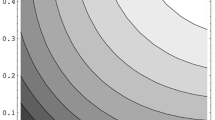Abstract.
The safe dissemination of statistical tabular data is one of the main concerns of National Statistical Institutes (NSIs). Although each cell of the tables is made up of the aggregated information of several individuals, the statistical confidentiality can be violated. NSIs must guarantee that no individual information can be derived from the released tables. One widely used type of methods to reduce the disclosure risk is based on the perturbation of the cell values. We consider a new controlled perturbation method which, given a set of tables to be protected, finds the closest safe ones - thus reducing the information loss while preserving confidentiality. This approach means solving a quadratic optimization problem with a much larger number of variables than constraints. Real instances can provide problems with millions of variables. We show that interior-point methods are an effective choice for that model, and, also, that specialized algorithms which exploit the problem structure can be faster than state-of-the art general solvers. Computational results are presented for instances of up to 1000000 variables.
Similar content being viewed by others
Author information
Authors and Affiliations
Corresponding author
Additional information
AMS Subject Classification:
90C06, 90C20, 90C51, 90C90
Jordi Castro: Partially supported by the EU IST-2000-25069 CASC project and by the Spanish MCyT project TIC2003-00997.
Rights and permissions
About this article
Cite this article
Castro, J. Quadratic interior-point methods in statistical disclosure control. CMS 2, 107–121 (2005). https://doi.org/10.1007/s10287-004-0029-2
Issue Date:
DOI: https://doi.org/10.1007/s10287-004-0029-2




